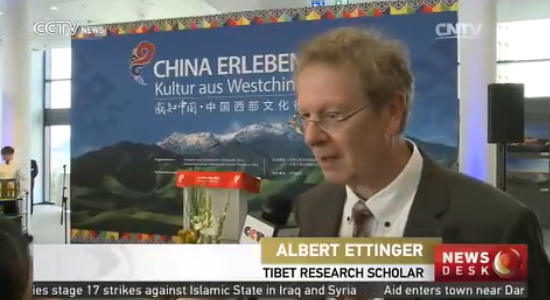"Tibetans in-exile" cannot speak Tibetan: Whose fault?
The recent “Miss Tibet” beauty pageant held in India showed just how much the "Tibetan exiles" have lost the Tibetan culture. According to overseas media, four "Tibetan exiles" from India and America participated in this contest. The contestant from India was chosen as the winner after three days of competition.
According to Indian media, the "Miss Tibet" generated controversy online since she did not even speak much Tibetan.
The Dalai clique often promotes how much it protects the Tibetan culture. A few days ago, during the Dalai Lama’s meeting with American president Obama, the Dalai Lama claimed to "comprehensively protect the interests of the Tibetan culture."
In the past few years, however, "the 'Tibetans exiles' did not speak Tibetan well or even knew the language at all" appeared in lots of both domestic and foreign media coverage. There are also frequent reports of their loss of the Tibetan language, an important carrier of Tibetan culture. Some media have said that the officials of the "Tibetan government in-exile” can speak fluent English but do not understand Tibetan, and they do not even have basic knowledge about Tibet.
That makes the Dalai clique's constant claim of “Culture Genocide” in Tibet ridiculous and rootless. Here are some facts showing how the Tibetan culture is retained and protected in Tibet.
The white paper on Tibet released in 2015 states that, the study of the Tibetan language has been effectively protected in Tibet. All Tibetan schools practice bilingual education. Pastoral areas and some village schools teach simultaneously in both languages, with main classes taught in Tibetan.
In 2014, Tibet People Publishing House and Ancient Tibetan Text Publishing House published 547 varieties of books, a total of 13 million volumes, among which the Tibetan books are more than 80% of the releases, including 14 kinds of Tibetan periodicals, and 11 Tibetan newspapers. In addition, the Tibetan language is widely used in the areas of postal services, communications, transportation, finance, etc.
At the same time, many ethnic culture artifacts and traditions on the verge of extinction were rescued and protected. The central government has established educational training grounds and comprehensive institutions such as the Tibet University, Tibet University for Nationalities, Tibetan Traditional Medical College, China Tibetology Research Center, Tibetan Academy of Social Sciences, and the Astronomical Calendar Research Institute, etc.
In the past several decades, Tibet has organized many large-scale and systematic surveys and compilations to organize, research, and publish projects to collect more than 10,000 musical (songs) and folk art forms, more than 30 million words in documents, recorded a large volume of audio and video, photographed almost 10,000 photos, published more than 1000 academic papers on traditional Tibetan culture, organized and published Chinese Folk Arts: Tibet, Chinese Folk Dancing: Tibet, and ten other integrated local records, 30-plus volumes of folk art research books, and rescued, organized, and published 261 ancient Tibetan texts.
Your Comment
Name E-mailRelated News
-
;
-
-

-
German scholar: It's wrong to think the Tibetan culture is dying
The event “Experience Western China” has begun in the German city of Frankfurt. It aims to help people learn more about China’s western region, according to CNTV on May 19.
-
-
-
Xinhua Insight: Tibetan culture undaunted in face of modernization
When night falls, singer Tseten Tashi can be found in one of the many bars across Lhasa, Tibet Autonomous Region.
-
-
-
Interview: Belgian expert sees real willingness to protect Tibetan culture
Over the past 50 years, the living standards of the Tibetan people has improved a lot with "indisputably huge" progress being made, Belgian Tibetologist Andre Lacroix said in a recent exclusive interview with Xinhua.
-
Based in Lhasa, Tibet Vista is a Tibet travel agency that specialized in Tibet permit, and Tibet tours for both private and group travelers at a local price!
•4 Days Lhasa City Group Tour from USD 460 •8 Days Everest Base Camp Group Tour from USD 850 •15 Days Mt.Kailash Group Tour from USD 1780 •2016 Tibet Train Tours from Beijing, Shanghai, Chengdu, Xining,etc










